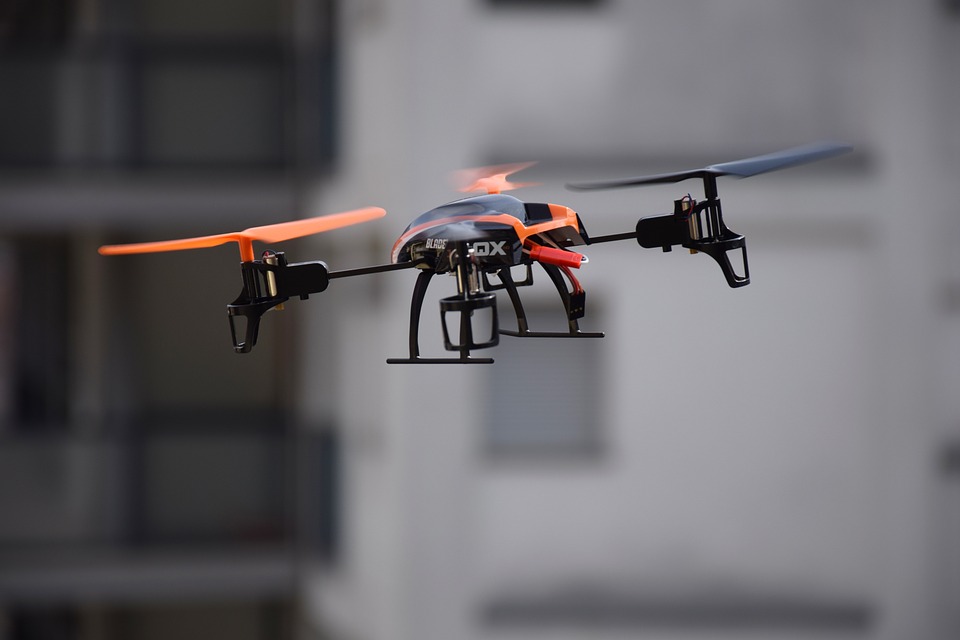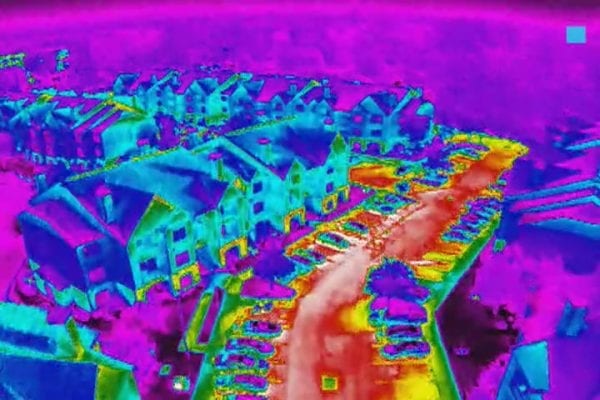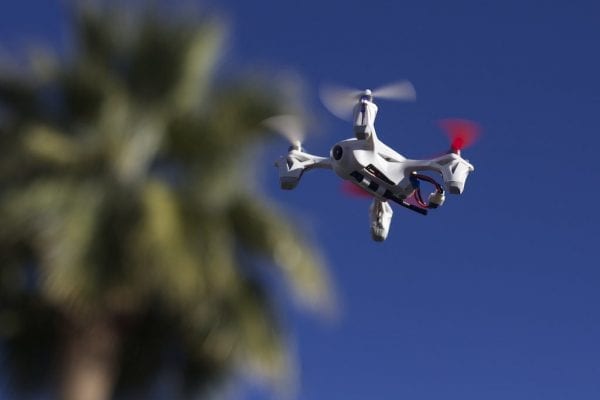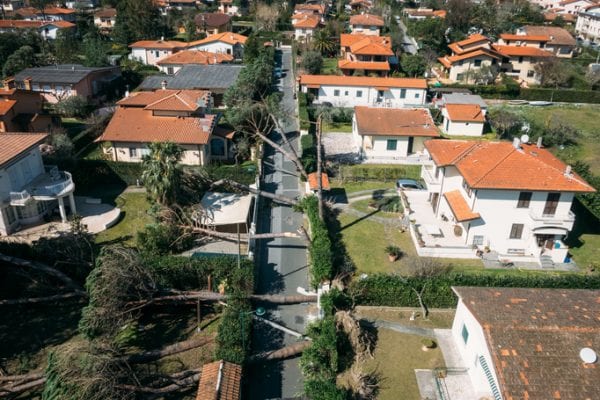Construction companies everywhere rejoiced this year when the FAA passed new regulations that make it simpler to legally operate Unmanned Aerial Vehicles (UAVs, aka drones) for commercial purposes. The new regulations have opened the door for substantial cost savings, new capabilities, and innovation. According to some industry estimates, the ruling is expected to generate more than $82 billion and create more than 100,000 new jobs over the next 10 years in the United States.
This is good news for property owners, architects, engineers and construction companies, as implementation of the technology promises to drive down costs in surveying, mapping, construction, renovation, property condition inspections, energy audits, environmental engineering, and much more. It also opens the door to new applications that were previously impossible, as well as inspections of areas and building elements that were previously inaccessible.
Recognizing the value for our clients, we invested in a drone operation this year, and are pleased with the new guidelines from the FAA. If you’re also interested in tapping into the enormous potential of the drone revolution, there are a few things you need to know. The FAA oversees and enforces regulations for private and commercial use of all aircraft, including UAVs. The Unmanned Aircraft Rule (Part 107) contains regulations for commercial users. Here’s what property owners, managers, and construction professionals need to know about Part 107 and the legalities of operating a drone for commercial purposes.
What Qualifies as Commercial Use
Commercial use of a drone includes any application used in connection with a business. This includes performing inspections on a commercial property, or selling inspection services for any building or property. It also includes construction applications such as surveying and mapping.
What Are Some Common Uses of UAVs that Property Owners Should Know About
UAVs have a wide range of potential applications for property owners and the contractors who work for them. Equipped with cameras and infrared sensors, they can be used to identify air infiltration and exfiltration, find hidden moisture, inspect external building elements (especially on high rise buildings), and reduce the cost of property inspections. When developing or renovating a property, drones can be used to decrease cost and increase accuracy of mapping, surveying, and quality assurance.
What Are the Requirements for Commercial Use of a UAV?
The August 29, 2016 FAA guidelines outline three types of requirements: The remote pilot, the drone, and the location.
Remote Pilot Requirements
All commercial small Unmanned Aircraft (drone) operators must be licensed with the FAA. If you intend to purchase a drone for business purposes, this means you not only need the drone, but you also need a licensed operator. The operator must meet these criteria:
- Minimum age of 16 years
- Hold a remote pilot airman certificate with a small UAV rating, which includes an initial aeronautical knowledge test at a FAA-approved knowledge testing center
- Pass Transportation Safety Administration (TSA) vetting
Drone Requirements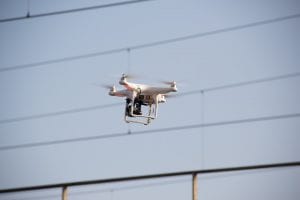
The drone itself must also meet regulations. Specifically:
- Weigh less than 55 pounds, including all attached equipment
- Pass pre-flight check before each use
Location Requirements
Finally, each use of the drone is subject to location and use requirements, including (non-exhaustively):
- Must remain within unaided, visual line of sight of the operator at all times
- Must not operate directly over persons not involved in the operation, nor under a covered structure or inside a vehicle
- May operate during daylight conditions only
- Maintain a maximum ground speed of no more than 100 mph
- Maintain a maximum altitude (feet above ground) of no more than 400 feet, unless in proximity to a building, in which case, must stay within 400 feet of building
You can download the complete regulation here.
How Can You Obtain a Commercial Drone License?
The new FAA regulations make operating a commercial drone easier, but they do still require a licensed operator. Individuals wishing to become a licensed operator must:
- Pass the FAA knowledge test at a certified Knowledge Testing Center, covering more than twelve topics
- Complete FAA Form 8710-13 for a remote pilot certificate
- Maintain remote pilot certificate including all recurrent testing
What Else Do You Need to Know?
If you’re considering the investment in a drone program, take the time to evaluate your needs and determine whether the cost and time involved will yield a good return. Because of the regulations involved, it’s often more profitable to look for partners who already have a drone program, and can provide you with drone-based services for a fee. Either way, it’s clear that the revolution in property services has only begun. We’re excited about the future, and are committed to being a part of bringing it to our clients.

